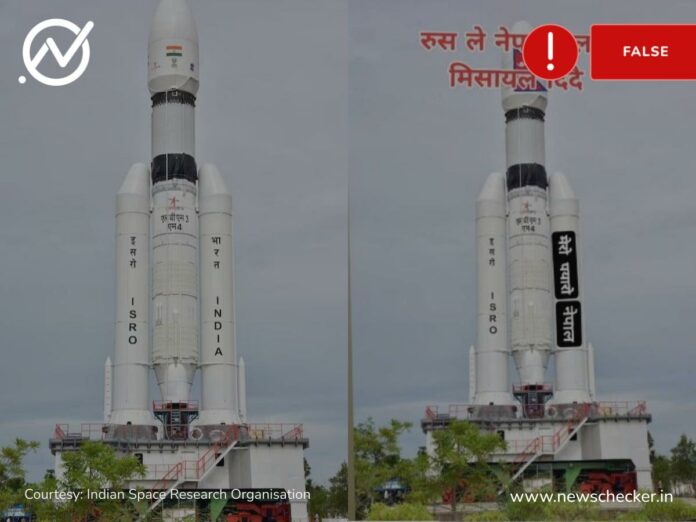Sanjeeb Phuyal is the Nepali Editor of Newschecker based in Kathmandu, Nepal. He brings over a decade of experience writing and editing news. In his previous stint, he worked as online editor for The Kathmandu Post. With the growth of social media platforms—and the ever-growing competition amongst media outlets to churn out breaking news, he feels that fact-checking every piece of information has become more essential today than ever before.
Claim
Viral video shows a missile being donated to Nepal by Russia
Fact
The image carried in the viral video actually shows the Chandrayaan-3 rocket at the launch pad in Andhra Pradesh, India
Even as the Russian government is showing keenness to increase its ties with Nepal at multiple levels, a 15-second video claiming to show a missile being donated to Nepal by Russia is going viral on TikTok.
In a meeting with Minister for Physical Infrastructure and Transport Prakash Jwala on August 21, Russian Ambassador to Nepal Aleksei Novikov held discussions regarding assistance for infrastructure development projects in Nepal including the construction of metro train service in the Kathmandu Valley.
Against this backdrop, TikTok user @rabilamachanaracapa posted a video showing an image of a rocket. Text superimposed on the video reads, “Russia donating a missile to Nepal.” The video caption reads the same. A flag of Nepal can be seen on the top of the spacecraft. A text written on the right body of a rocket reads, “My lovely Nepal.” A patriotic song motivating the youth is played in the background.The archived version of the TikTok video can be seen here.
The video posted on July 10 has garnered 21.7k likes, 160 users have shared it and 522 people have commented on it. Newschecker found the claim to be misleading.
Fact Check /Verification
To check the authenticity of the claim made in the viral video, Newschecker split the video into several keyframes and conducted reverse searches on them. The search pointed us towards the spacecraft of Chandrayaan 3. Chandrayaan programme led by Indian Space Research Organisation is a series of space missions to explore the Moon.
We checked a photo story, dated 6 July 2023, regarding Chandrayaan-3 published on India Today online and found that one of the photos exactly matched the image carried in the viral video. We compared the images from the viral video and the article. The only difference was the flag on top of the spacecraft and the text written on the right side.
Our findings clearly indicated that the same image was slightly edited to make the false claim.
Further, we ran a keyword search on google and found several news articles carrying the image whose frames almost resembled the photo used in the viral video. On checking a news article regarding Chandrayaan-3, dated July 11, 2023, published on Republic World online, we found that the image exactly matched the viral video except for the text written on it ‘Nepal is lovely’. The handout photo of Indian Space Research Organisation caption read that the image showed the Launch Vehicle Mark-III (LVMC) rocket at the launch pad in Sriharikota, Andhra Pradesh State of India.
Thus, our findings showed that the viral video showed the Chandrayaan-3 rocket before its launch earlier in July. India has successfully landed its Chandrayaan-3 spacecraft on the moon’s south pole only on Wednesday (August 25).
Conclusion
The viral video allegedly showing a missile donated to Nepal by Russia is misleading. The image carried in the viral video actually shows an edited video of India’s Chandrayaan-3 spacecraft at the launch pad in Andhra Pradesh.
Result: False
Sources
India Today, 6 July 2023
Republic World, 11 July, 2023
If you would like us to fact check a claim, give feedback or lodge a complaint, email us at [email protected] You can also visit the Contact Us page and fill the form.
Sanjeeb Phuyal is the Nepali Editor of Newschecker based in Kathmandu, Nepal. He brings over a decade of experience writing and editing news. In his previous stint, he worked as online editor for The Kathmandu Post. With the growth of social media platforms—and the ever-growing competition amongst media outlets to churn out breaking news, he feels that fact-checking every piece of information has become more essential today than ever before.



